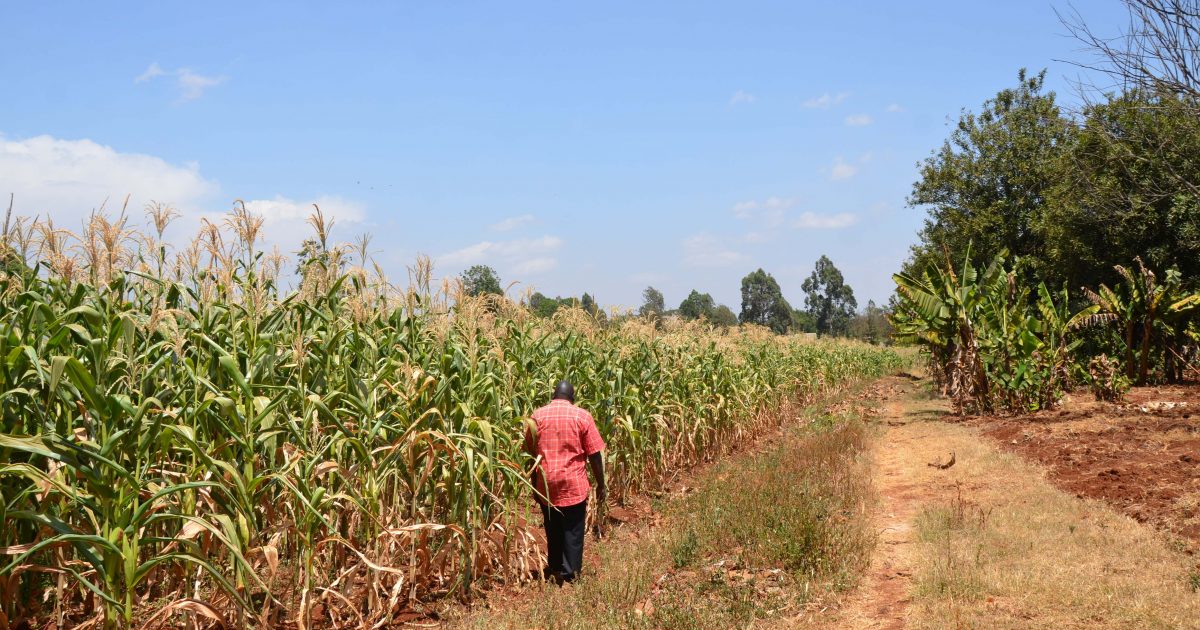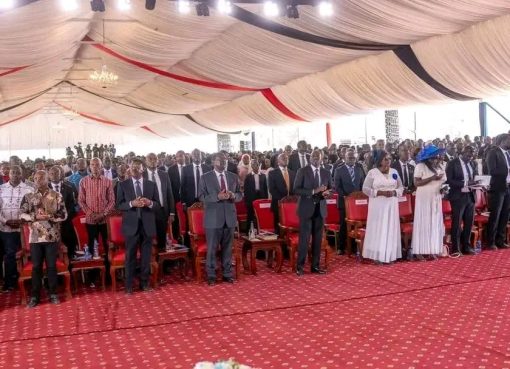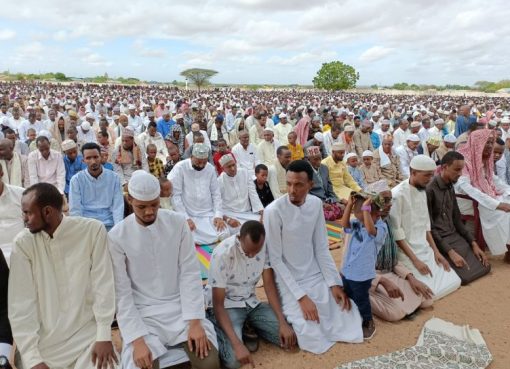As the month of October comes to a close, farmers in Nyeri county are hoping against hope that the short rains will not fail after all.
Earlier this month, Nyeri County Director of Meteorological Services John Muiruri told KNA that the onset of the October-November-December rains would be due around the third week of October.
The officer similarly hinted that the rains will be normal before tending to depressed showers later in mid-December.
“The short rains will begin from the third to fourth week of October. What we are experiencing is not seasonal rains. These rains will be short-lived and the dry spell will extend to the third and fourth week of this month,” he said.
A weather outlook report from the Kenya Meteorological Department (KMD) dated September 30 showed the onset of the short rains was anticipated between the fourth week of October and the first week of November over the eastern part of the country.
The rains were also expected to occur during the third to fourth week of October over the central parts of the country that include Nairobi.
The expected total rainfall amounts were however predicted to be near to slightly above the long-term average amounts for October.
The October -November -December distribution of rains was also predicted to be poor over most parts of the country with prolonged dry spells and cases of isolated storms, according to a rainfall weather outlook by KMD released on August 31, 2024.
But with the month of October effectively over, farmers could be staring at the prospect of lost crops and failed harvests as most of them had already put seeds in their farms.
There is also the fear that any downpour after October may be too little too late considering that most of the crops like maize require an uninterrupted downpour of at least two months.
“We often anticipate the rains to fall around October 25 but this time things have really changed. We can only hope it will rain in the next few days. Short of that I fear I might end up losing my entire crop of beans,” says Mrs Mary Wachira, a farmer from Gatitu village, Nyeri Township who has put her 10-acre piece of land under beans.
She is nevertheless grateful after managing to realize a bumper maize harvest during the last season thanks to the heavy long rains.
Wachira’s sentiments are echoed by Charles Chege a resident of Gathuthi village in Othaya subcounty.
Chege says he fears he may end up losing his entire crop of maize as most of the young saplings have already started to wither.
He now says the only hope now remaining for him is to hope the rains will eventually come and do so fast.
“We had planted early with the high expectations that the rains will fall on time following assurance from the Kenya Meteorological Department. Unfortunately, hopes of seeing any substantial downpour is slowly but surely going up in smoke. Things have really changed. I fear for the future,” he admits.
Central Region National Drought Management Authority (NDMA) coordinator Lordman Lekakul says framers should now devise alternative approaches in managing production as the seasons continue becoming more and more erratic.
While trying to avoid sounding outright pessimistic about the seriousness of the present situation, Lekakul warns that the country could very well be staring at another disappointing season where farmers may end up reaping less than what they had anticipated.
“This season (the rains) would be below normal, either near normal or below normal. It means we are not expecting much from this season. We are asking the farmers to plant fast maturing or drought tolerant crops. They should not plant maize seeds that last six months because the onset (of the rains) is actually supposed to be during the first week of November and it will stop in the second week of December. There is basically not much to celebrate in terms of harvest,” he states.
The officer has however ruled out the possibility of there being a food crisis in the county saying such a scenario can only happen after more than two failed rainy seasons.
Consequently, families living in drought prone areas like Kieni East, parts of Mathira and Mukurwe-ini need not worry as the current situation is not all that dire.
In addition, according to Lekakul, the county recorded a bumper harvest during the last two seasons, a large portion of which of is still in farmers’ stores.
Kenya had been battling her worst drought in over four decades prior to last year owing to worsening ecological changes that were blamed on climate change.
In the wake of five failed rainy seasons, close to 2.5 million animals had reportedly died by early 2022 and at least 5 million Kenyans reported to be in urgent need of food relief.
In 2021 the World Food Program (WFP) had estimated that four consecutive failed seasons in the country had resulted in close to 2.4 million livestock deaths, dried-out water sources and sharply reduced harvests.
The number of people in urgent need of food assistance had by then risen five-fold, from 739,000 in August 2020 to 3.5 million in June 2022.
Kieni East and Kieni West constituencies were among areas that were hit hard by drought in Nyeri in 2022 leaving at least 200,000 families fully dependent on relief food.
Other areas that were also affected by the drought included Mathira East and Mathira West.
The government had initially set aside Sh8 billion for the purposes of providing food to affected families and feeds for livestock in drought ravaged areas of Nyeri.
Humanitarian agency World Vision had also injected Sh 3.5 billion into the program that was to include rehabilitation of boreholes.
The Government in conjunction with the European Union donated 1,120 bags of animal feed to livestock farmers in Kieni constituency in a bid to boost dairy production in the area.
The feeds were part of 5,040 bags that the NDMA had requisitioned to support the farmers in Kieni East and Kieni West sub-county during the entire drought season.
By Samuel Maina





